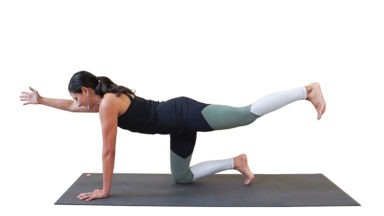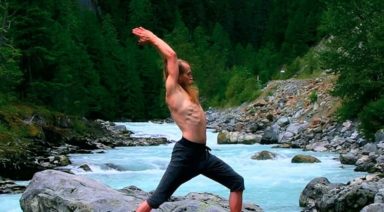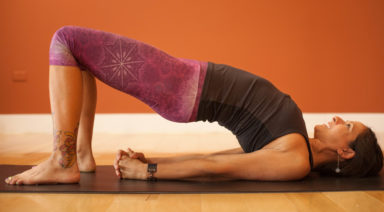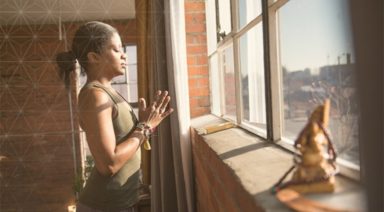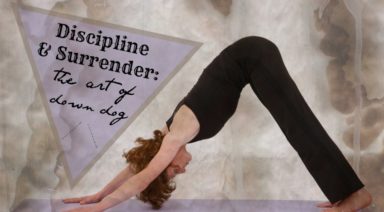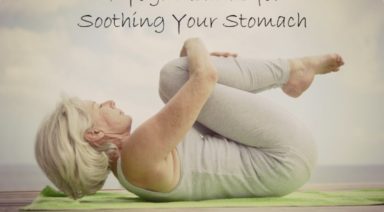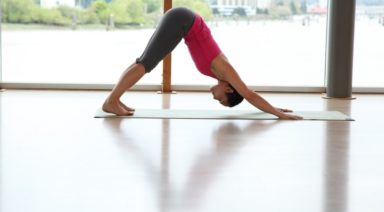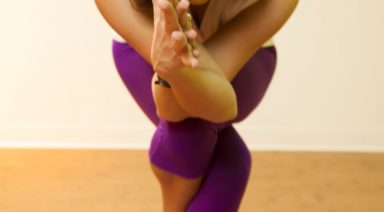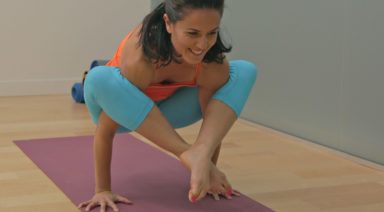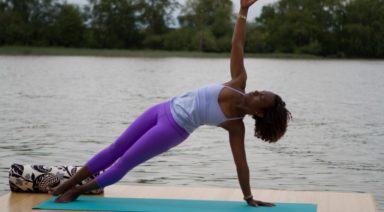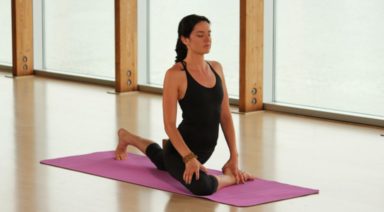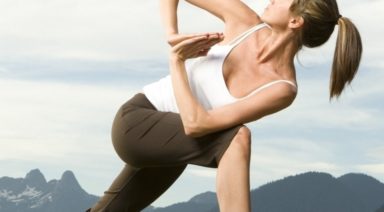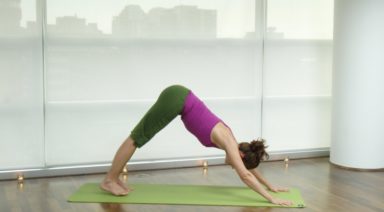Viparita Virabhadrasana: Reverse Warrior Pose

ADJUSTMENTS | BENEFITS | SEQUENCING | SANSKRIT | STEPS
In viparita virabhadrasana (VIP-uh-REE-tuh veer-uh-buh-DRAHS-uh-nuh), experience a member of the “warrior” family with an incredible opening in the side of the torso as well as the stretching the legs. By giving the side of your heart an opportunity to shine (as a side bend rather than a back bend), this posture offers all sorts of positive vibes, including a boost of self-esteem and perseverance.
Philosophy + Origin
The general definition of a warrior is someone who “engages in warfare,” which conjures up images of battlefields, weapons, and violence. The power of reverse warrior is to “turn around” this imagery to think about warriorship in different contexts. The idea of a peaceful warrior, or even a light warrior, is used in yoga to remind students that showing up with love and intention in day-to-day life is just as important, if not more so. When practicing reverse warrior, ask yourself to consider definitions or beliefs in your life from another perspective. There are two sides to each coin, and the better you know both sides, the better prepared you will be to live your life with steadiness, grace, and ease.
Adjustments/Modifications:
- If gazing up feels uncomfortable, practice the pose with your gaze toward the ground or use your raised arm to cradle the head.
- Rather than trying to reach back as far as possible in this pose, bring your attention to lifting and lengthening through the spine.
- Pay special attention to your lower back as you practice this pose. If you begin to feel a backbend more than a side bend, ease away from the shape until you can once again find length and space.
Step-By-Step
- Start in warrior II with your right foot forward and your left foot back. Bend your front knee directly over your ankle.
- Inhale your right hand to the sky.
- Keep the bend in your front knee.
- Lengthen the sides of your torso with every inhale, strengthen your legs with every exhale.
- If it’s comfortable for your neck, turn your gaze up to the fingertips of your right hand.
- Soften your shoulders down your back.
- Hold for 3-5 breaths, then release to warrior II. Repeat on the other side.
Preparatory Poses:
- Warrior II | Virabhadrasana II
- Extended side angle | Utthita parsvakonasana
- Revolved head to knee | Parivrtta janu sirsasana
Sequential Poses:
- Extended triangle pose | Utthita trikonasana
- Seated compass pose | Parivrtta surya yantrasana
- Monkey lunge | Anjaneyasana
Counter Poses:
- Extended side angle | Utthita parsvakonasana
- Wide-legged forward fold | Prosarita padotanasana
- Standing forward fold | Uttanasana
Sanskrit:
- Viparita = reversed, turned around
- Virabhadra = incarnation of Lord Shiva
- Asana = pose
Physical Benefits:
- Stretches groins, hips, and obliques.
- Releases tension in the muscles around the ribs to create a deeper, freer breath.
- Energizes the body.
Energetic Benefits:
- Improves self-esteem and perseverance.
- Opens the heart and throat chakras.
- Calms the mind.
Legal Disclaimer Before participating in any exercise program or using any fitness products or services that may be described and/or made accessible in or through the Gaia Website and/or the Services, you should consult with a physician or other healthcare provider. Read more about Gaia’s Terms Of Use.
Ardha Uttanasana: Half Standing Forward Bend
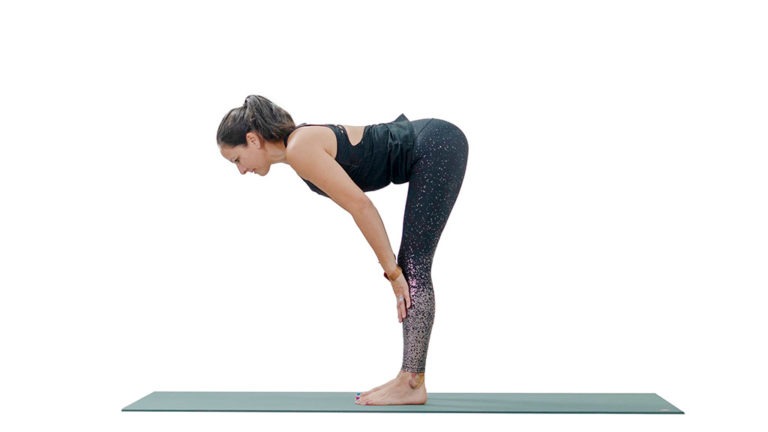
ADJUSTMENTS | BENEFITS | SEQUENCING | SANSKRIT | STEPS
An effective stretch for your hamstrings and calves ardha uttanasana (ARE-dah OOT-tan-AHS-anna), is often used during vinyasa sequences to connect the breath as you flow from one posture to the next.
Philosophy + Origin
One of the reasons ardha uttanasana is used so much in vinyasa yoga classes is that it positions the body for chaturanga dandasana. Because it engages the navel and core, it’s a powerful pose for warming up the body, which is why it’s included in warm-up sequences. Despite its sometimes transitory nature, the pose also engages the navel chakra (manipura), which can bring the practitioner increased confidence and willpower.





